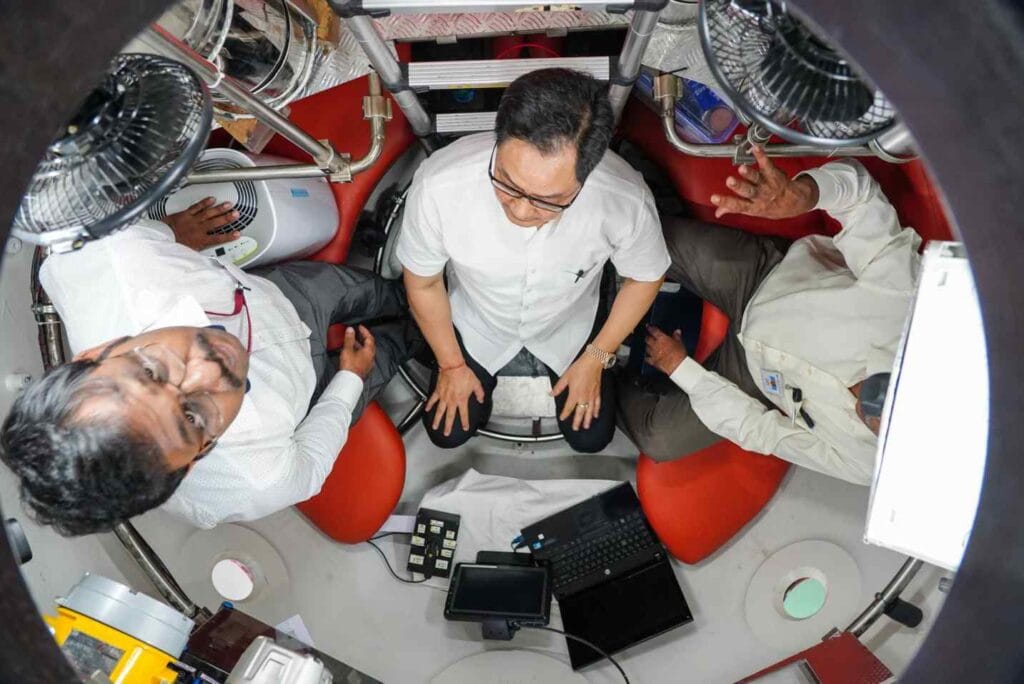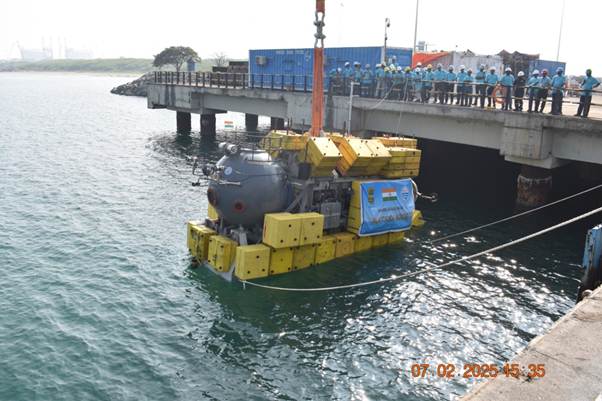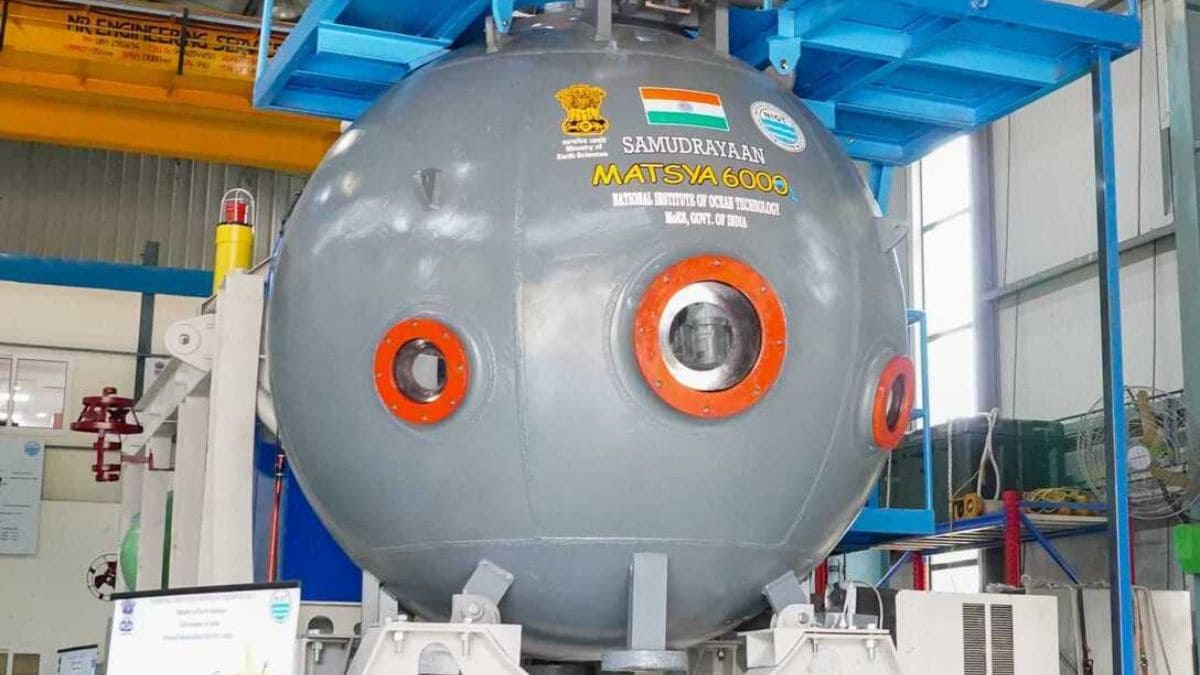Samudrayaan is the mission to send three humans up to 6000 meter ( 6 km) depth in deep sea by a submarine “Matsya 6000“. This mission will be conducted by the National Institute of Ocean Technology (NIOT) Chennai, an autonomous educational and research institute under Ministry of Earth Sciences (MoES) of Government of India. This mission expected to launch in 2026 in Indian ocean.
This mission is the a part of Deep Ocean Mission, which aims to explore deep sea resources, and develop advanced deep-water technologies and enhance India’s capabilities in ocean research. This mission focuses on deep-sea mining, biodiversity studies, climate change impact assessment, and the development of submersibles for human explorations.
This mission is India’s first crewed deep-sea mission. Previously, India reached a depth of 5,271 meters in the Indian Ocean using the Autonomous Underwater Vehicle (AUV) OMe (Ocean Mineral Explorer)-6000 in December 2022 for deep-water mineral exploration.
Samudrayaan Mission Challenges
When humans are involved, a human-rated safety system is essential to ensure their safe return. For instance, the famous Titan submersible by Ocean Gate imploded at a depth of about 3,800 meters, killing all five onboard due to structural failure, here are some challenges for this mission.
- Extreme Pressure Resistance: At 6,000 meters, the pressure is nearly 600 times that of the surface, requiring high-strength titanium alloys for the Matsya 6000 submersible.
- Reliable Life Support Systems: Maintaining oxygen levels, CO₂ scrubbing, and temperature control for long-duration missions
- Navigation & Communication: Radio signals don’t work underwater, so it relies on acoustic communication, which is slow and unreliable.
- Harsh Deep-Sea Conditions: Extreme cold (~2°C), high salinity, and zero sunlight make deep-sea survival difficult.
- Unknown Terrain & Obstacles: Navigating the unmapped ocean floor with rocky surfaces, trenches, and hydrothermal vents.
- Pressure-Related Health Risks: Risks of decompression sickness or oxygen toxicity in case of system failures.
- Limited Emergency Escape Options: Unlike space missions, deep-sea escape is nearly impossible in case of failure.
The deepest point ever reached by humans is 10,908 meters (10.9 km), achieved by the DSSV Limiting Factor submersible in 2019 at the Challenger Deep, the deepest known point on Earth, located in the Mariana Trench in the Pacific Ocean, which reaches a maximum depth of approximately 11 km.
Japan Has Developed First Wooden Satellite, LignoSat, to Address Space Pollution
What is Matsya 6000
The Matsya 6000 is a 4th generation deep-ocean human scientific research submersible, developed by NIOT, Chennai, can operate normally for 12 hours during a mission. However, in case of an emergency (such as system failure or delays in resurfacing), it has backup life-support systems that can sustain the crew for up to 96 hours (4 days). This emergency endurance includes oxygen supply, CO₂ removal, and power backup to ensure the safety of the crew until rescue or resurfacing.

| Made of material | Alloy Steel |
| Diameter | Approximate 2.1 meter |
| Weight | Around 25 tones |
| Capacity | Three crew member ( 2 Scientist + 1 Pilot ) |
| Normal Operation | 12 hours |
| Emergency Survivals | 96 hours (4 days) |
| Propulsion System | Battery powered thrusters |
| Energy Source | Lithium-ion batteries |
| Navigation and Communication | Ultra-Short Baseline (USBL) Acoustic Positioning System |
| Surface Location Tracking | GPS |
Cost of Samudrayaan mission
Samudrayaan mission is the part of Deep Ocean Mission finance ministry has an estimation of 4077 crore rupees to allocate for Deep Ocean Mission in two phases from 2021 to 2026.

Read also
Meet Vyommitra: The AI-powered Humanoid Astronaut of India’s Gaganyaan Mission


